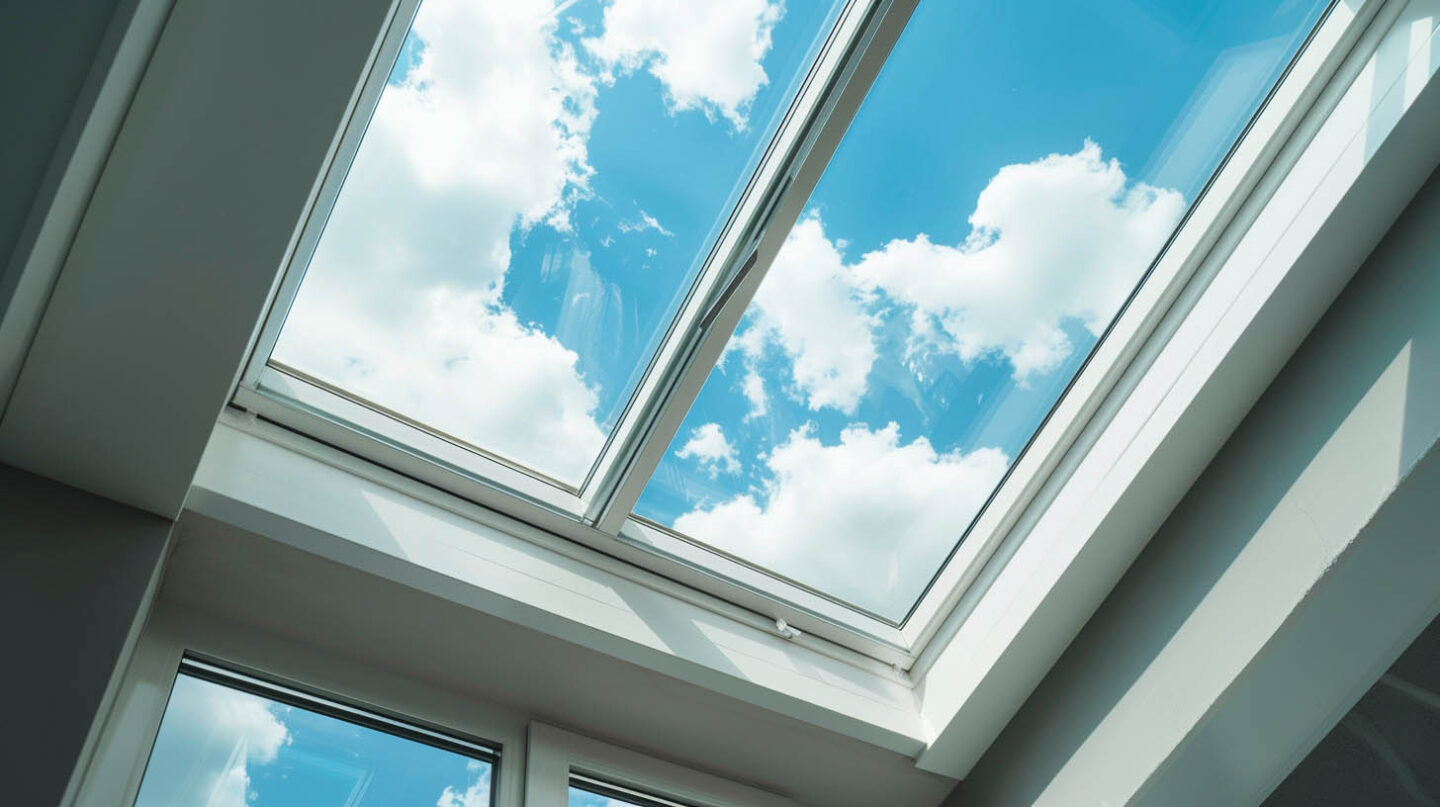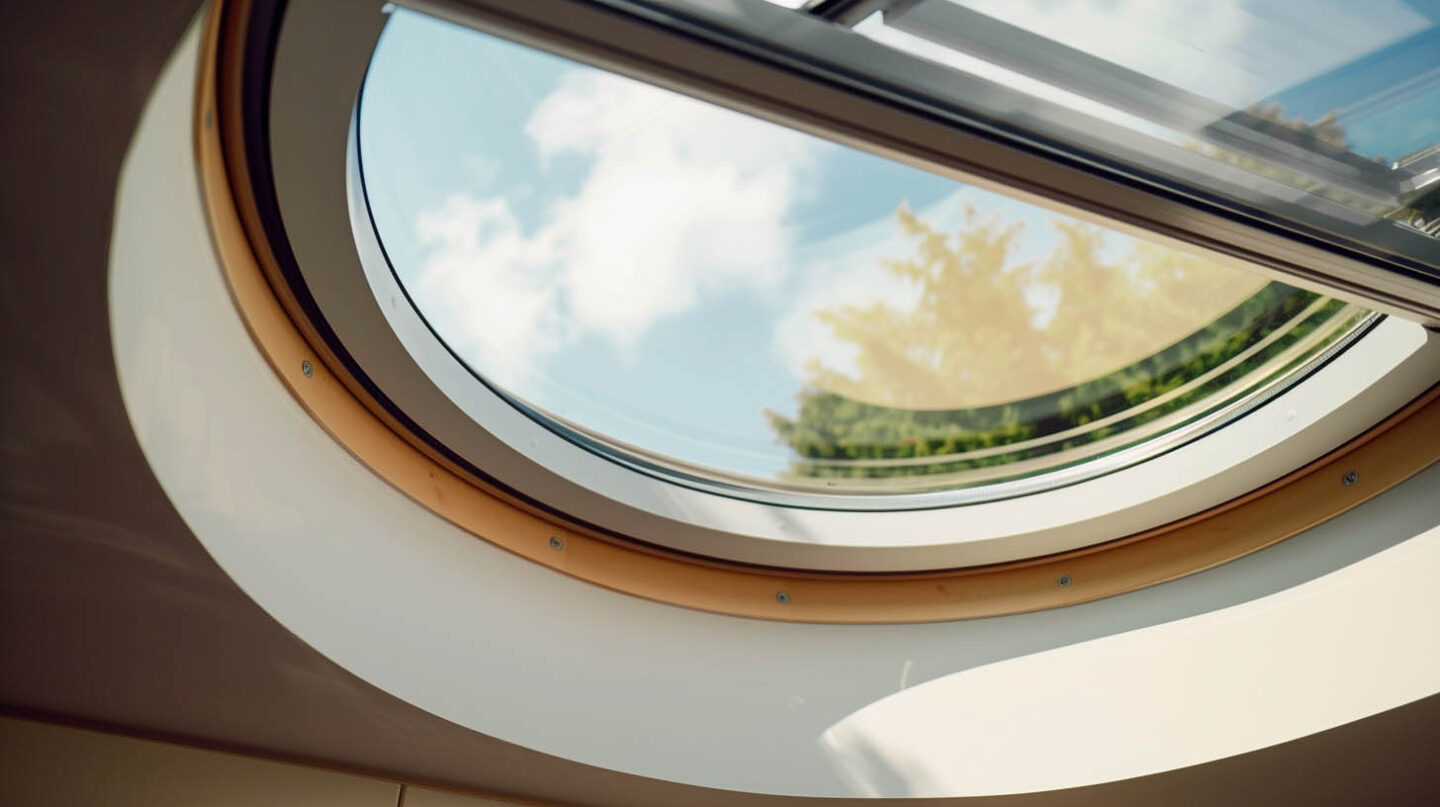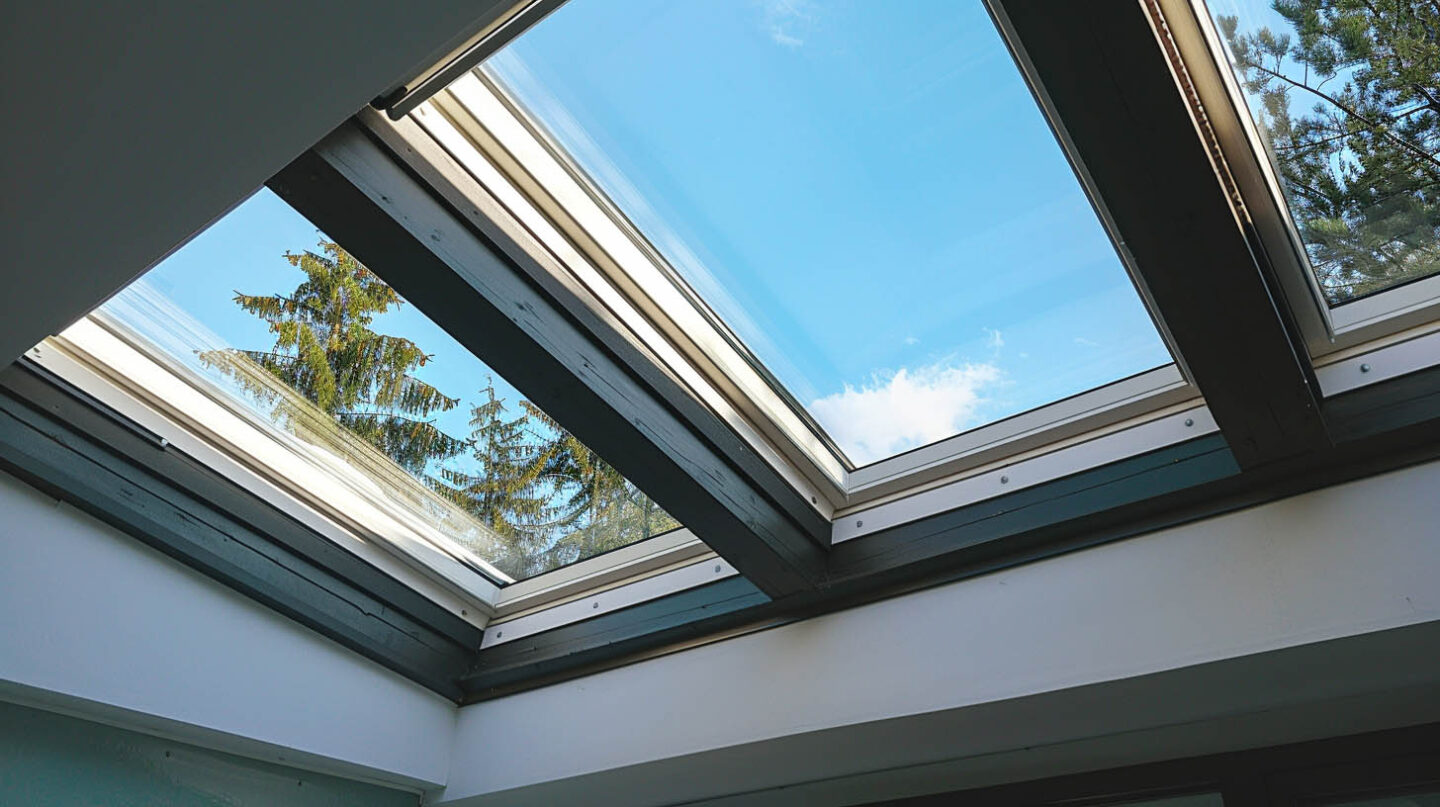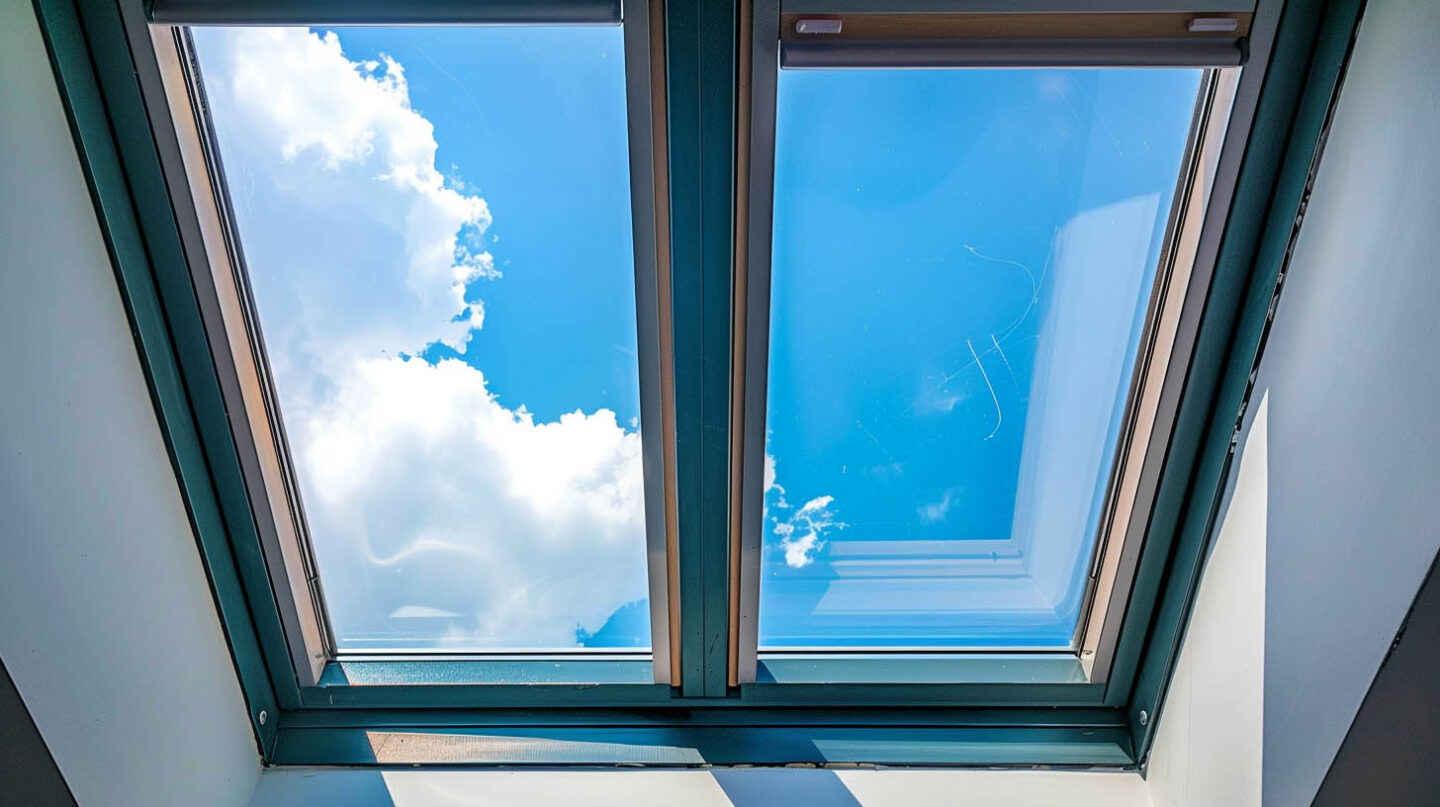Are you looking for a great way to brighten up a dark room in your home? Adding a skylight is an excellent solution to increase natural light, which can boost your mood and improve your home’s energy efficiency by reducing reliance on artificial lights. But with different types available, which one is right for you? At The Shingle Master, we specialize in providing top-notch skylight installation and roofing services in Cary, NC. Our experienced team is dedicated to helping you understand the key differences between traditional and tubular skylights so you can make the best choice for your home. Trust The Shingle Master to enhance your living space with expert advice and quality craftsmanship.
Understanding Skylight Types
Choosing the right type of skylight involves weighing the pros and cons of each option. The two main choices for homeowners are the traditional skylight, which is essentially a window for your roof, and the tubular skylight, a more modern and compact solution.
Each type of skylight offers unique benefits and comes with its own set of considerations, from light quality and energy performance to the risk of leaks and installation complexity. Let’s look at what defines each one.
What Are Traditional Skylights?
Traditional skylights are fixed windows installed in roofs, designed to allow natural light into a space. They come in various shapes and sizes and can enhance aesthetics while providing additional lighting. However, they may pose leak risks if not properly installed or maintained.

What Are Tubular Skylights?
Tubular skylights, also known as solar tubes, are compact daylighting systems that capture sunlight through a dome-shaped roof structure. They channel the light through reflective tubing into interior spaces, enhancing natural illumination while minimizing heat gain and UV exposure compared to traditional skylights.
Natural Light Output Comparison
One of the biggest questions homeowners have is about brightness. How much light will you actually get? Both traditional and tubular skylights can significantly reduce your need for artificial lighting during the day, but they deliver natural light in different ways.
A traditional skylight provides broad, direct light, while a tubular skylight offers more diffused, indirect light. The best option for you will depend on the size of your room and the quality of light you prefer.
How Much Light Do Traditional Skylights Provide?
Traditional skylights typically provide substantial natural light, enhancing indoor brightness. Their size and placement significantly influence the amount of light they can bring in. Generally, larger traditional skylights offer higher light output, making them effective for illuminating larger spaces.

Light Performance of Tubular Skylights
Harnessing abundant natural light, tubular skylights provide an efficient solution for smaller spaces that require optimal brightness. Their innovative design uses reflective tubes to channel sunlight, making them ideal for areas like laundry rooms or hallways. Unlike traditional skylights, these systems significantly reduce glare while maximizing daylight exposure without compromising energy efficiency. The solar heat gain coefficient ensures minimal heat transfer, allowing for a comfortable indoor climate throughout all seasons, effectively balancing light output and energy costs.
Leak Risk and Water Resistance
A leak is the number one fear for any homeowner considering cutting a hole in their roof. Water damage can be costly and destructive, so understanding the leak risk is crucial. The truth is, any penetration in your roof has the potential to leak, but the risk is not the same for all types of skylights.
Poor installation is the leading cause of skylight leaks, regardless of the type. However, the design of a tubular skylight inherently makes it a more water-resistant option compared to its traditional counterpart.
Common Leak Issues with Traditional Skylights
Traditional skylights can often be prone to leaks, mainly due to poor installation or aging roofing materials. These leaks occur around the flashing, where the skylight meets the roof, creating potential moisture intrusion. Additionally, condensation may build up within the skylight frame, leading to water damage over time. Homeowners should also be aware that damaged seals can contribute to roof leaks, compromising insulation and increasing energy costs. Regular maintenance and prompt attention to these issues are crucial for preserving indoor spaces.

Leak Protection Features in Tubular Skylights
Innovative engineering sets tubular skylights apart concerning leak protection. Utilizing a reflective tube design minimizes potential leak points compared to traditional skylights. The included flashing provides a secure seal against moisture penetration, while insulation around the tube reduces heat transfer and condensation, further decreasing leak risks. Moreover, the use of robust materials in solatube tubular skylights promotes durability, ensuring that these systems maintain their integrity even in extreme weather. Homeowners can enjoy abundant natural light with minimized reliance on artificial lighting.
Installation Process and Suitability
Beyond light and leaks, the installation process itself is a major factor. The complexity, time, and installation costs vary significantly between the two types. For many homeowners, this can be the deciding factor when choosing which skylight is the better choice for their project.
A simpler installation is not just about saving money upfront; it’s also about reducing the risk of future problems. Let’s explore what’s involved in putting each type of skylight in your home.
Steps and Risks in Installing Traditional Skylights
Installing traditional skylights involves several key steps that ensure optimal performance and minimize risks. First, selecting the appropriate location is crucial to maximize natural light and view. Next, precise measurements must be taken to cut the roofing material accurately, followed by implementing flashing to prevent leaks. However, neglecting proper insulation or opting for low-quality products can lead to significant risks, including heat loss, roof leaks, and condensation issues. Homeowners should prioritize expert installation to mitigate these potential problems, ensuring a cost-effective and efficient solution.
Simplicity and Placement Options for Tubular Skylights
Installation of tubular skylights is often praised for its straightforwardness. Their lightweight design and flexible placement options make them an efficient solution for various indoor spaces. Commonly utilized in smaller areas, such as laundry rooms or hallways, these skylights employ reflective tubes that channel natural sunlight effectively. The versatility in positioning, combined with minimal invasive installation requirements, allows homeowners to enhance brightness without significant renovations, thus providing an excellent way to improve energy efficiency while minimizing costs.
Get in Touch
Choosing between tubular and traditional skylights involves considering light output and leak risk. Traditional skylights typically provide abundant natural light but may present challenges, such as significant energy costs and potential water leaks due to poor installation. In contrast, tubular skylights offer an efficient solution for smaller spaces, harnessing direct sunlight effectively with less risk of condensation and roof leaks. Ultimately, the right choice hinges on the specific needs of the homeowner regarding brightness, energy efficiency, and installation complexity. As a GAF Master Elite Contractor, BBB A+, Haag Certified Inspector, NC Licensed General Contractor, and Raleigh’s Best Roofing Contractor, we prioritize quality and reliability in every installation, ensuring your skylight choice meets your unique requirements.
Frequently Asked Questions
Do tubular skylights leak?
Tubular skylights are designed with leak-resistant features, making them less prone to water intrusion compared to traditional skylights. While no system is entirely leak-proof, proper installation and maintenance significantly reduce the risk of leaks in tubular skylight systems.
What is the most typical skylight problem?
The most common and feared skylight problem is roof leaks, typically caused by failed flashing or seals due to age or poor installation. Other issues include condensation buildup, especially in humid rooms, and heat gain or loss. Lesser-quality skylights may also allow harmful UV rays to fade furniture and flooring.
What are the disadvantages of Solatube?
Solatubes can present challenges such as limited light output compared to traditional skylights, potential installation difficulties, and reliance on optimal weather conditions for efficiency. Additionally, their aesthetic appeal may not match that of larger skylights, which could impact your home’s overall design.
Read our blog: Petroleum-Based Roof Sealers: Short-Term Fix, Long-Term Risk


